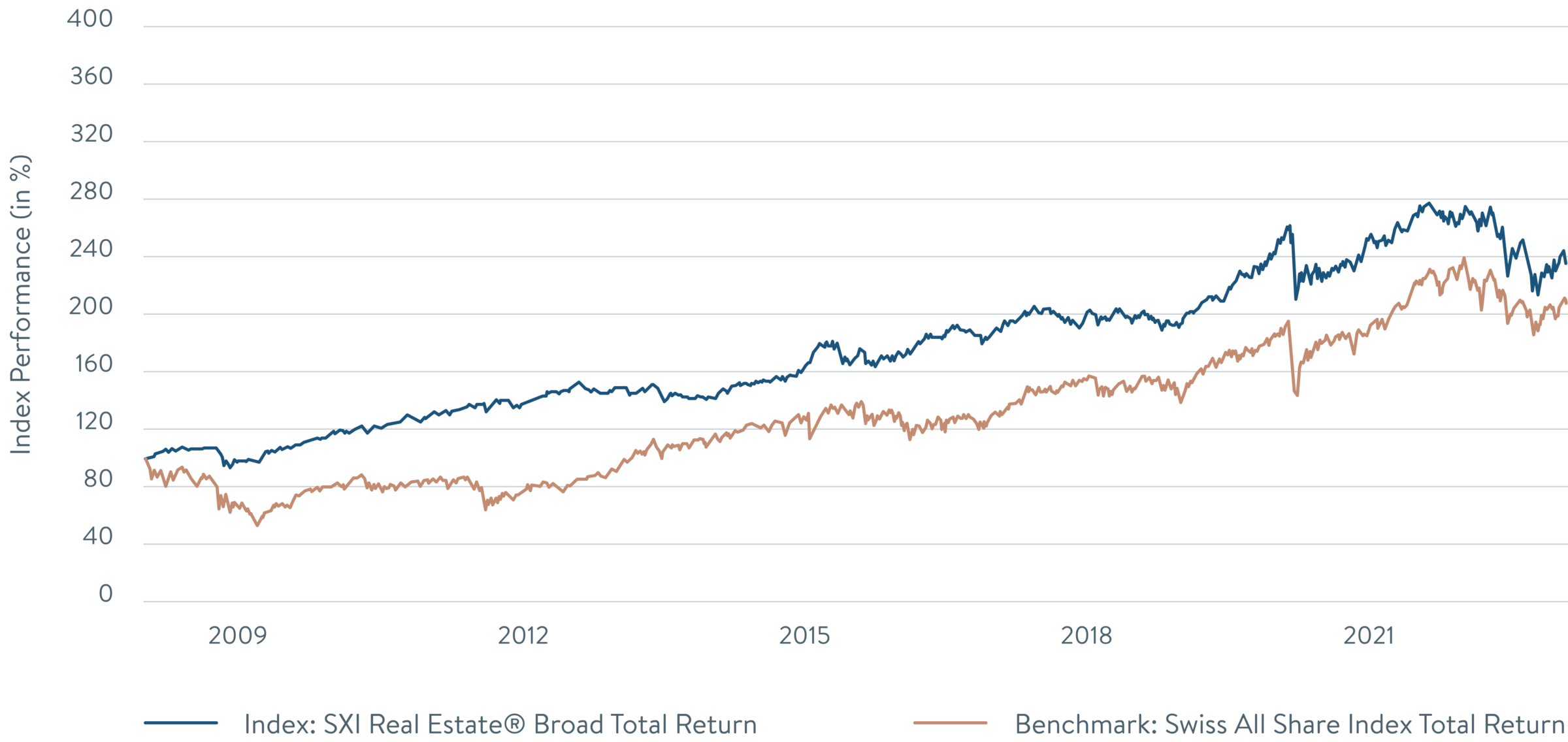“Landlords grow rich in their sleep without working.” - John Stuart Mill
Real estate has long been an avenue for building and maintaining wealth. Over the last 15 years, the SXI Real Estate® Broad Total Return (SREAL) index has outperformed the Swiss All Share Index Total Return (SSIRT) with almost half of its volatility (7.89% vs. 12.92%). Real estate is also one of the few assets wealthy families pass down through generations. Further, unlike Bitcoin, it is a tangible asset with an intrinsic value.

Comparison of Swiss real estate vs. equity market performance
Source: SIX Group
If you don’t own any real estate yet or are looking to build up your real estate portfolio, there is always a way to enter. However, haven't the standard techniques of investing in real estate outlived themselves?
Despite the strong advantages of REITs to provide a stable source of income with an easy way for investors to buy and sell their holdings on a public exchange, like any publicly listed asset, a REIT is susceptible to the daily volatility of the stock market and mainly focuses on providing a regular income stream instead of returns from capital accumulation.
On the other hand, with direct ownership, the second most common form of real estate investment, you have full control over how you manage your investment. For instance, you can choose the location, target market, timeline, and investment focus: rental income or capital accumulation.
However, not everyone has the capital to purchase real estate directly. Even fewer have the capital to diversify across several properties. This concentrates your risk and limits your diversification. Further, real estate management takes a lot of time and energy; difficult tenants are draining! While these tasks can be outsourced, you cannot escape the mortgage and insurance payments.
Speaking of the modern investment option, flipping houses has many of the benefits of direct ownership but with better liquidity. Here, the goal is to identify the real estate in markets with speedy capital accumulation prospects. It is the classic “buy low and sell high” strategy. Speed is key because a quick exit minimizes your exposure to mortgage payments, insurance, and other expenses, creating a significant risk for house flippers to get into trouble when the expected capital accumulation does not come and they are unable to exit quickly or forced to exit at an overall loss.
Additional Resources:
The good news is that in today’s market, there is an alternative.


